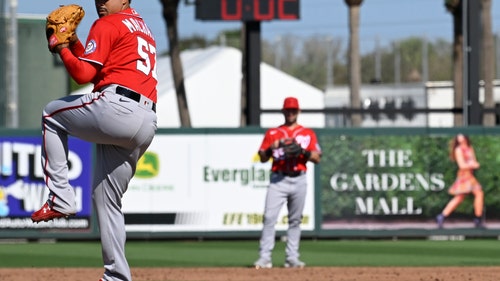
Strength training is the roadmap to success

The New York Post threw up a photo of New Your Yankees’ Japanese star Masahiro Tanaka grimacing while participating in a mile run conditioning test fairly standard for pitchers reporting to Spring Training. The headline read “Yankees’ big-bucks pitcher Tanaka winded after 1-mile run”
Sensationalizing aside, it got me thinking about the merits of long distance running as a training tool for baseball players leading up to and during Spring Training.
A pitcher's windup and throw is an explosive, coordinated full-body movement. They perform the move once, then rest, then perform it again. There is nothing aerobic about it. The duration of the burst is ridiculously fast, and boatloads of oxygen is not needed. Yet baseball still trains it’s athletes as if they are preparing for a distance run.
Granted, the training can be enjoyable; mentally stimulating even.
There was a point in 2007 when I was pounding the pavement for many miles weekly. Throwing on a hoodie and headphones and getting lost in a long run is pure freedom for me. I embrace the trance, the intense sweat and, of course, the endorphin release. My dad ran a few marathons; I fight the urge to do the same because I know that it’s not the most efficient way to train unless you’re preparing for an event similar in nature, which baseball players are not.
Personal trainer Mike Donavanik, C.S.C.S., C.P.T.:
Minute per minute, cardio indisputably burns more calories than strength training, which could explain why compared to strength trainers, aerobic exercisers lose more weight in less time, according to a recent Duke University study.
But our goal going into the season is not to burn calories and lose weight, in most cases. The ideal is to get ready for the grind, build armor, and be fast and strong.
For my own personal experience, I wanted to see what happened when implementing something aerobic other than running. I was curious to see how my body would change and respond. To test if another form of cardio would have a more palatable end result, I spent a year doing long uphill climbs on a mountain bike. It was quite effective in giving me a sweat drenching and a cool buzz, but I lost more mass.
To this day, I’ve been unable to put back on the muscle I had prior to experimenting with cardiovascular training.
Donavanik continues:
Still, cardio doesn’t do much for your muscles. Case in point: In one Penn State study, dieters lost 21 pounds whether they performed cardio or strength training. But for the cardio group, six of those pounds came from muscle, while the lifters lost almost pure fat—and probably fit into their skinny jeans better because of it.
When I backed off the cardio and refocused on strength training, the muscle definition came back. While I haven’t added the mass back, I might be equipped to if I decided to add ample calories to go along with my workouts.
Training with heavy weights is the key to the tone and density desired by most in the fitness community. You may not lose weight as quickly, but you’ll be more likely to stay lean.
“Strength training is the number-one way to build more muscle. And for every three pounds of muscle you gain, you can expect to burn an extra 120 calories a day without moving a single one of those muscles,” says Donavanik.
In place of cardio, I run sprints. In doing so, I’m more likely to maintain lean muscle, gain or maintain my speed and burn more fat. And in a sport like baseball, where anaerobic training is more valuable than cardio, it’s 100% more applicable. Everything we do on a baseball field is a sprint.
Sprinting, unlike mild jogging or using elliptical machinery, releases and increases certain enzymes and natural factors within each cell that greatly enforces the oxidation of fats in the body. Blood glucose levels work in a controlled manner through sprinting, which serves as another fat burning promoter. Too much or too little glucose causes insulin level fluctuations, which trigger either fat storage or fat burning. Sprinting provides the body with a higher tolerance to the consumption of starchy and sugary carbohydrates, since more energy becomes used by muscles rather than stored as fat.
Applying common sense to this discussion, picture a marathon runner then picture a sprinter. Which body seems more tailor made to withstand the MLB season? So, my curiosity is not about Tanaka’s condition, it’s why we are still testing his conditioning with a distance run.
Everybody has different training goals. If your goal is simply to exercise your heart, by all means, go for a jog. If you want to maintain or build muscle mass and perform admirably on the baseball field, sprint and train explosively.










